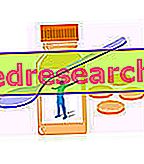
The kiwi contains actinidain or actinidine, a potentially allergenic molecule. It is a cysteine protease enzyme that also characterizes pineapple, mango, banana and papaya. In addition to these fruits, kiwi allergy shows cross reactivity towards latex.
The kiwi also contains calcium oxalate crystals in the form of horseradish, which irritate the oral cavity but have nothing to do with the allergic reaction.
The adverse effects of actinidine include: sweating, tingling or pain in the mouth or throat, swelling of the lips and / or tongue and face, rash, vomiting and abdominal pain, heartburn; in the most serious cases, breathing difficulties, dyspnea and collapse can occur.
The most common harmless symptom is unpleasant itching in the mouth, while the most frequent serious symptom is difficulty breathing. The most severe clinical pictures of kiwi allergic reaction are almost always attributable to those of very young age.
There is no cure for kiwi allergy; it is a permanent condition that must not lead to allergic reactions. However, if this happens due to involuntary swallowing of the food, in the less serious cases we proceed with the assumption of an antihistamine- based drug; if an anaphylactic shock occurs, it is almost essential to go immediately to a hospital and, in the meantime, eventually proceed with the injection of epinephrine .



